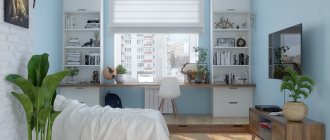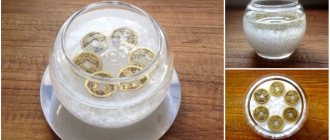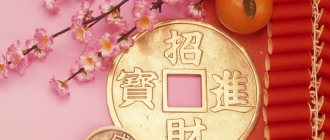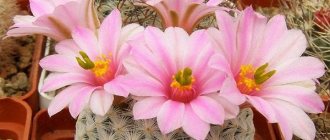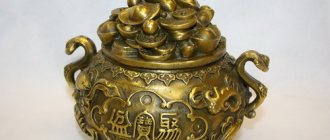Feng Shui in the garden
First of all, let's decide why it is generally necessary to work on your plot according to this ancient Eastern teaching. As you know, the essence of Feng Shui is to improve the flow of Qi energy flows. This favorable energy brings a large number of positive events into our home and life and makes us happier.
In addition, the correct construction of internal space also allows us to protect our home from negative external influences, protects each family member and strengthens relationships between people. Feng Shui inside the house also blocks the possibility of negative Sha energy getting inside. The emergence of diseases, problems and other negative aspects is associated with it.
When it comes to a country house or dacha, then things are somewhat more complicated. The fact is that when living in an apartment, our living space is limited only by its area, we only need to equip it.
If we have a separate house with a full-fledged plot, then the living area in this case is considered not only the area inside the walls, but also the vegetable garden, garden, and so on. That is why in the teachings of Feng Shui, special attention is paid to the fence surrounding the garden plot. This is the first line of defense and it determines what energy and in what quantity will enter our home and life.
The very same area of the site is a kind of prism, which either enhances the impact of internal feng shui, or acts negatively on it and weakens it. Agree that it is much easier to filter out negative energy before it enters the house itself than to fight the negative influence inside the home.
In addition, the correct Feng Shui of the site several times enhances the favorable flow of Qi that enters the house. This is practically unavailable in cases where we are talking about city life in an apartment. This fact once again confirms the importance of properly arranging your site and arranging the space inside it according to Feng Shui.
Below we will talk about which plants are best placed in your garden and where exactly to do it. This information will help you create a truly high-quality Feng Shui garden with your own hands, but now we will touch on the topic of what can have a negative impact on the site.
Quite often, people who want to develop their plot, first of all get rid of the trees growing on it. Experts say that this should be done only in extreme cases, since the destruction of vegetation is always associated with negative consequences for the energy of the house. If such a tree is sick or has dried out, then cutting it down will not entail absolutely no consequences.
Things are somewhat different with the vegetation outside the site. There are quite frequent cases when one or more trees grow immediately opposite the entrance to the territory, and quite close.
As you know, it is through a gate or wicket that the bulk of favorable Qi enters your area. In this case, trees act as dividers for this flow, or even completely block it from getting inside. It is recommended to get rid of such vegetation as soon as possible.
If this is not feasible, then you can resort to a trick - build a kind of hedge corridor from the gate or gate, which would bypass the interfering trees. In this case, the flow of energy enters this tunnel, and then onto your site.
Sick plants also have a very negative effect on the energy of the local area and home.
According to garden Feng Shui, trees and other plants that dry out and fall off recommend either treating them or getting rid of them. By the way, unhealthy vegetation is quite often an indicator of the action of negative Sha energy, so you should be careful about these kinds of signs.
Quite often you can observe an abundance of creeping plants on the walls of houses and fences. When the growth of this vegetation gets out of control, it negatively affects the energy flow into the house. Creeping plants are good because they noticeably soften sharp corners, so their use on the site is not prohibited by the teachings of Feng Shui, but just do not forget that any vegetation needs to be looked after, and especially this variety.
Thorny plants can create tension between family members, so they should be removed from the area.
If you really want, you can plant them to the left and right of the entrance to the site, from the outside. In this case, the plant will act as a prickly protection that prevents negative energy from entering.
Selection of site and location of the house
A garden planned according to the principles of Feng Shui can be made in any style - oriental, rustic, landscape. The main thing is that the laws of movement of qi energy are taken into account and that it is directed correctly: the flow of qi energy must freely reach the area, then penetrate it with smooth bends, without accumulating anywhere. An important point in this regard is the selection of a site and the placement of a garden house on it. It is not advisable to locate the garden near industrial enterprises, power lines, sewage treatment plants, on the top of a hill, a busy street, in a dead end, near a large building or wall. The optimal location of the site is in a place that would meet the principle of a deep chair: the site should be protected from behind, to the right and left (mountain, hill, group of trees), and in front there should be open space with a beautiful view (river, lake, valley).
The shape of the site is important: ideal - a rectangle or square (elements of earth and wood), as well as a round shape, undesirable - a triangle, an inverted trapezoid (the qi energy will stagnate in sharp corners). The optimal orientation to the cardinal points is determined taking into account the celestial animals: protection is necessary from the north (turtle), west (white tiger), east (green dragon), open space should be in the south (red phoenix).
Since the main conductor of qi energy is water (a network of streets and roads), it is very important to correctly place the house on the site. The best option is when the river (or road) passes by your house in a winding route, flowing neither too fast nor too slow. It is good when the house is located on a smooth bend of a road or river with moderate traffic. The central path to the house should not be straight; it is desirable that it curves smoothly and is located at an angle. But if sharp corners are directed at your house (the corner of a large building, a road intersection, a telegraph pole or a large tree, a boiler room chimney, a narrow opening between buildings, antennas, spiers, satellite dishes, etc.), then it means that secret arrows or negative energy are affecting it sha. In this case, you need to take measures to protect their harmful effects: a hedge or fence in front of the house, a high threshold, a small fountain in the entrance area, an octagonal mirror on the wall of the house (do not point at the living quarters!), a small cannon or crossed swords at the entrance to the house. A straight path can be made winding by placing flowerpots with flowers along its edges.
Principles of Feng Shui garden
A popular feng shui principle is the opposites of yin and yang, neither of which can exist alone. In a Feng Shui garden, you need to achieve a balance between yin and yang. If you have a flat area (yin), include vertical objects in it: walls, pergolas, partitions (yang). The best solution to balance a flat landscape (yin) is to do geoplasticity, i.e. create artificial hills or alpine slides.
It is undesirable to create straight lines and angles (sha). Energy should not flow through the garden too quickly, such as in a garden with a long straight path leading directly to the front door of the house. A more successful solution would be a winding path, the contours of which resemble a stream. Trees and shrubs can also be used to conceal your front door.
In the Russian version it is pronounced as bagua. To decorate the garden according to the laws of Feng Shui, a magic bagua grid is used, with the help of which the area is divided into nine sectors. These zones are wealth, fame, marriage, family, children, knowledge, career and teachers. According to Eastern philosophy, they reflect the cycle of human life. The zones are grouped around, from which all life force flows into other zones.
Apply a bagua (pa-kua) grid to your area and plan each zone according to it. In this way, you can increase the flow of chi energy by improving these specific areas of your garden, and activate the area of your life that you want to change or improve.
Site layout and zoning
Planning a garden in accordance with the principles of Feng Shui has much in common with conventional zoning of the territory. That is, you first need to determine the general purpose of the garden (for relaxation, growing vegetables), choose the style of the garden (romantic, landscape, country style), and then make a list of necessary elements (sports ground, vegetable garden, pond, gazebo, bathhouse, barbecue area, etc.) etc.), then you should highlight the main zones in accordance with the Bagua octagon. But first you need to determine which element your garden is associated with. To do this, stand with your back to the house and look at the garden: the side to which your face is turned determines, according to Feng Shui, the subordination of the garden to a certain element. When oriented to the east and southeast - to a tree; to the south - to fire; to the southwest - to the earth; to the west, northwest - to metal; to the northeast - water. Accordingly, the necessary element for balance should be introduced into the garden. For example, if the garden is subject to the fire element, you need to bring in the water element.
Next, you need to superimpose the octagonal bagua diagram (drawn on tracing paper) onto the garden plan so that the quarry area is on the side of the main entrance to the garden. Proper arrangement of the garden will help enhance the impact on individual areas of the bagua. In the quarry area there is a fountain, a stream, which symbolizes the course of life: in the children's area - a playground, a playhouse, fruit bushes; in the zone of good helpers - a bench, souvenirs from distant countries, a Mediterranean corner; in the partnership zone - a gazebo, an alpine hill, a vegetable garden, a greenhouse; in the glory zone - a garden sculpture; in the wealth zone, clean running water, a place for reading and meditation, and a rose garden are desirable; in the knowledge zone there is a decorative pond, a Japanese garden, a shed for equipment, in the family zone there is a courtyard, a play area, and a swimming pool. The tai chi zone (center) is left free - a lawn and gravel area are arranged. The garden plot should harmoniously complement the house, the lines should be smooth, the paths should be winding, the paving should be made of natural materials (stone, wood, bark, gravel). Paths should not cross the center of the site. Flower beds and ponds should have an irregular, free shape. Most of all, the principles of Feng Shui correspond to a garden in a landscape style. The Chinese consider the side of the house where the front door is located as the face of the house, and the door is like a mouth on this face. Therefore, the entrance area and the front door must be decorated with special care, since this is the business card of the owners. This could be a sign on the door, a wreath, a horseshoe, a lantern, as well as plants in containers, but not symmetrically located. It is important to provide the necessary protection and privacy on the site. It should not be completely cut off from external energy flows (solid fence). On three sides the site can be surrounded by a high fence, including a living one, and on the entrance side the fence should be lower (to the window sills of the first floor) and preferably transparent (forged lattice).
Garden plot plan before applying feng shui principles |
Garden plot plan after applying the principles of Feng Shui |
Feng Shui for the garden: determining zones
In many ways, the principles by which a site is arranged are similar to similar rules when working with housing. Here we also use the Bagua grid; it underlies the system of distribution of certain plants in the local area.
The most successful case is that the entrance to the house and the entrance to the site are directed to the north; this is the most favorable location from the point of view of Feng Shui. However, this is not always feasible; in this case, experts recommend taking the direction where your entrance is directed as the imaginary north. Of course, in this case, the flow of Qi will not enter in full, but you will still feel the harmonizing effect on life.
The entire territory is divided into nine segments: the cardinal directions and the central part. It would be great if the house itself is in the center. If this area is empty, then arrange a small garden in this place.
According to Feng Shui, fruit trees symbolize the circulation of life and bring a lot of positive energy. Place one or more of these trees in the center of the area and this will create a powerful influx of Qi energy into your home. We will talk in more detail about the segments associated with the cardinal points in the next part of the article.
Career zone
The square in the center of the near horizontal row is the career area.
To activate energy, it is advisable to place a source of running water in this place. If there is no stream or well from which water is pumped, then a fountain will be a wonderful object.
Brown, gold and yellow tones should be avoided. These are the colors of the earth, which, according to the teachings of Feng Shui, suppresses the power of water. Plant blue and blue flowers.
Pay attention to good lighting of the sector. He shouldn't be in the dark.
Feng Shui garden plan
Here we look at the remaining eight sites. Each of them has its own characteristics and arrangement rules. Depending on what is in a particular segment, the state of affairs in any area of your life and the life of your family changes.
Northern part
Traditionally, the north of the site is considered a quarry zone. The element is water. It follows that here it is necessary to plant those plants that need a large amount of liquid. It is desirable that they be blue or black. These can be bushes with black berries or blue flowers.
If you want to constantly grow in terms of your career, then it is recommended to place moving water here.
This could be a decorative waterfall, a small fountain, etc. If you are not pursuing career growth, then simply fill this space with plants.
North-eastern part
This part is responsible for wisdom, learning and knowledge. Element – small earth. There should be nothing moving here; it is advisable to make this area as suitable for privacy as possible. Choose yellow or beige plants for this segment.
Compositions made of stones and everything connected with it will fit harmoniously here.
In the northeastern area, you can place a recreation area for one person, which would allow you to be alone and think about different things.
East End
Traditionally, the eastern region is considered a place of health and family. The element is a large tree. In order to improve the health of all family members, it is recommended to plant evergreens in this part.
In general, it is advisable to make this area as green as possible. If you arrange a family recreation area here, this will have a beneficial effect on the relationships between household members.
South-eastern part
There is wealth associated with this area of the site. The element is a small tree. Place moving water here, this will ensure that you always have money.
It is necessary to ensure that the water circulates and does not flow away, otherwise the same will affect your finances.
Any tall trees, plants and structures will also have a beneficial effect on your financial situation. The higher the item located here, the higher the income will become. You can plant purple flowers and evergreens here.
South part
Reputation and glory are what this site is responsible for. The element is fire. As you probably already guessed, red plants should predominate here. These may be bushes with red berries or flowers of the same color.
Water in any form should not be here; it will put out the fire and “tarnish” your reputation. Experts also do not recommend placing anything related to stone and earth here; they will not allow the fire to flare up.
If desired, you can place a stove or fireplace here.
Southwestern part
This area is associated with love. Element – big earth. It is best to place a small flower garden in this area; it is desirable that the flowers have a pink tint. Since the relationship between spouses depends on this area, it is recommended to place something here that will allow them to spend time together.
For example, this could be a bench for two, a large swing, a gazebo, and the like.
West Side
This is the children's area of the infield. The element is a small metal. Since this area is associated with children, it is necessary to create the most lively environment here. If possible, make a playground here.
If you wish, you can organize a bright flower bed of a large number of flowers in the western part. You can also place a place here for pets; this area is great for this.
Northwestern part
This zone is associated with helpers and friends. The element is a large metal. Typically, when people set up a feng shui garden, they place a garage or parking area in that area. This kind of encourages people to come to you as often as possible.
You can also place a veranda or gazebo here for a large company. This will also have a beneficial effect on the number of your friends and strengthen your connection with them.
Source: ezoterika.ru
Feng Shui is the ancient Chinese science of living in harmony with the world.
Harmony here means a balanced exchange of energies between man and nature. I am not a fanatical follower of all sorts of philosophical and religious movements; I choose what suits my spirit and what I consider appropriate, but many of the principles of Feng Shui seem correct to me.
Modern adherents of this science claim that family well-being, professional success and even fame and fame can be achieved with the correct placement of home interior items and balanced garden landscape design.
“Happiness comes to the house through the garden,” says Chinese wisdom, which means that if there is harmony in the garden, then it can come to us too.
So…
One of the basic principles of Feng Shui is the correct use of Qi energy.
Chi energy is the universal life force found in all that is living and perfect. Qi creates everything beautiful in nature. Slowly flowing water creates qi. A light breeze brings qi, but hurricanes and storms, on the contrary, drive it away. Everything perfect carries qi within it. The bird sings - qi appears. The meadow blooms - and attracts qi, the grass turns green - again qi.
In nature, life energy exists constantly.
In order for vital energy to fill our garden, the presence of three elements is necessary: stones, water and plants. Balance and proportion are the basis of the power of Feng Shui. All elements of the garden must correspond to each other. One element of the garden should not be allowed to dominate the others. Always try to leave the central part of the garden free: do not place tall decorative elements, large trees or large shrubs here. Feng Shui strives to ensure that everything looks natural, as if it has existed here for more than a dozen, or maybe even a hundred years.
When planting groups of trees, shrubs or placing decorative elements, avoid symmetry. Acute angular elements located along paths and paths can direct sharp Qi energy to the passerby. Give preference to the curving, smooth outlines of paths and paths in your garden over strict straight lines.
Feng Shui for a natural style garden!
A regular garden shows the rise of man above nature, and how a child of nature, which man is, can be higher than his progenitor.
Different areas of our garden relate to different aspects of our lives.
Thus, the far left corner of the garden represents wealth and prosperity. Since bright colors attract chi energy, try to place plants with purple, red or blue flowers or leaves in this part of the garden. The central part of the garden symbolizes fame and reputation, so an arch placed here will attract and lure Qi energy in order to direct it into the life of the owner of the garden, giving him fame and a good reputation.
The far right corner of the garden symbolizes love and family, so it is advisable to place pink, red and white flowers here.
To implement the principles of Feng Shui in your garden, you need to determine the cardinal directions (eight directions).
NORTH
Plans, new ideas, job advancement, music, art. Place water features here; The location is suitable for a workshop or outbuildings. Try to use smooth, curvy lines. Do not place stone in this area or leave any areas of the ground exposed.
NORTHEAST
Knowledge, wisdom, meditation, studying your own inner world, intellectual and spiritual growth. It is advisable to leave open areas of land in this part of the garden. It is good to place a stone bench or rock garden here. It is advisable to leave the landscape unchanged. Avoid planting trees and other plants in this part of the garden.
EAST
New life and growth, rebirth and restoration, harmony, health, family life, nutrition and healing. Use water features in this area of the garden. A good place for planting fruit trees and herbs (including medicinal ones). It is good to place a bathhouse or sauna here. Use pyramidal and conical shapes. Do not use metal accessories, white flowers, or metal furniture in this place.
SOUTHEAST
Family and personal well-being, prosperity, health. Use wooden decorative elements. A good place to grow plants and flowers. Favorable shapes: pyramidal, columnar, vertically oriented. Avoid using metal garden accessories, metal furniture and white flowers. SOUTH Opportunities, dreams, aspirations, awards, fame, achievements, happiness, longevity, fun. Fire is an important element in this part of the garden. It is advisable to place a barbecue area, grill, etc. here. Plant plants with large, textured leaves here. Acute-angled and triangular shapes are suitable here. Under no circumstances should water structures be placed here - ponds, waterfalls, fountains, etc.
SOUTHWEST
Everything related to family and love. Use earth elements. A good place for a quiet family holiday, as well as sports games. It is better to leave the topography of this part of the garden flat. It is unacceptable to place wooden furniture or wooden patio flooring here, as well as wooden arches, pergolas, and fences. WEST Children, results of activities, relationships with people and entertainment. In this part, use metal elements. The place is perfect for a children's playground, outdoor activities, as well as recovery after illness. Use the circle and arc as the main shape when designing this corner of the garden. Do not place barbecues, grills, or red flowers here.
NORTHWEST
Work, interests outside the home, travel, fatherhood, charity, help and support of other people Use metal decorative elements. A good place to place various elements that make sounds when the wind blows. Do not place barbecues, grills, or red flowers here.
You may have noticed that if there is a corner on the site, then without thinking we begin to store items that we do not need, and if there are no such items, then we hide the garbage (such is the instinct of a chipmunk), and this is an accumulation of negative energy. It is better to remove the corners from the site: plant a bush in the corner, or install a trellis with vines. The garden will immediately take on a smooth shape.
These are the briefest and most general provisions of this teaching; if you get into the jungle of this science... it is very difficult. Whether or not to apply this teaching is up to everyone to decide for themselves. I personally use only a few rules: Smooth shapes, absence of sharp and even right angles, and where I will hang the bell, in the south or northwest, I don’t care, and the areas are completely different, it’s not always possible to place what you need according to Feng Shui, where needed on the site.
Good luck
Blocks in a feng shui garden
It is important that the chi energy can move around the garden without interference and not be blocked by anything. Such “blockers” could be, for example, a garbage can next to a place to rest, or a very dense and high hedge that blocks the view of the surrounding landscape.
Trees and plants
Keep trees and plants healthy. They will create abundant qi. Remove any dying or rotting trees or plants. Otherwise they will bring negative qi.
Water symbolizes wealth and prosperity and should be running, clean and placed at the front of the house. This could be a small fountain, pool or pond.
If a stream flows through your site, it should gently curve the house. Flowing water creates qi. Be sure to provide a pond when creating a Feng Shui garden with your own hands.
Sound and movement
Objects that create sound and movement, such as bamboo bells, are useful in creating chi. Another great way to create sounds is to feng shui attract birds and beneficial insects to your garden. They bring beneficial joy to the garden. Use bioprotective agents to control pests.
We recommend you a site dedicated to environmentally friendly gardening, where you can find a large number of tips on the use of biological methods of growing plants https://ekosad-vsem.ru/
Color and aroma
Color and aroma are also beneficial for your feng shui garden. In Feng Shui, all visible and invisible things in our environment are subject to the five elements (natural forces of nature): Fire, Earth, Metal, Water and Wood. Each of them has properties. You must choose colors and scents based on their location in the garden and in accordance with the Ra-Kua teachings of the five elements.
Five elements
The five elements of the universe, the five elements, all of them serve as conductors of qi energy, and personify certain feelings, colors and shapes. The goal pursued by the creator of the Chinese garden is that all the elements are represented in the garden, and they are in harmony with each other, that is, the energies of yin and yang are in balance.
Such balance can be achieved if you lay out the garden systematically and consciously, using all decorations according to the rules of Feng Shui. The presence of all the elements does not make the garden colorful. Variety is unacceptable in a Chinese garden; the main thing is to find a balance between shape and color.
This is a special art. A flight of fancy is possible here, bring something of your own. It can be anything. In the table you will find symbols for the expression of the five elements.
DIY Feng Shui garden. Where and what plants should be planted
The southern corner of your garden regulates fame and fame
Flowers planted here are predominantly red and pink. Flowers that bring glory: poppies, roses, bluebells, violets. Trees: cherry, orange, hazel, heather and all ferns. Herb: anise. Garden plants: strawberries, leeks, chili peppers. This corner also represents the Fire element, so it is a good area to set up a barbecue or place a small fire pit.
The southwest corner governs marriage and family happiness.
The predominant color should be yellow. Flowers: daffodils, lilies, tulips, asters, daisies, gardenias, lavender, poppy, primrose, periwinkle, hyacinth, violet, geranium. Trees: magnolia, plums, juniper. Herbs: basil, marjoram, dill, mint, rosemary, thyme. Garden plants: raspberries, tomatoes. This zone is governed by the Earth element, so you can place a stone statue or a large stone or boulder here.
The Western Angle rules children and fertility
The predominant colors here should be yellow and white. Flowers: lavender, cyclamen, lily of the valley, morning glory. Trees: oak, olive tree, banana, apple tree, pine. Herb: mustard. Garden plants: beans, carrots, cucumbers, grapes.
This side of the garden is influenced by Big Metal. Place small metal objects here that will reflect the sun, bells would also be appropriate.
Northwest corner - teacher or mentoring area
Preferred plant colors should be white, yellow and orange. Flowers: sweet pea, sunflower, iris, carnation. Trees: lemon, peach, beech, walnut, rowan, myrtle tree. Herbs: mint, lemon balm, sage. Garden plants: pepper, dill, pumpkin. This area is ruled by Metal, so it is a good place to place benches and gazebos.
The North Angle rules career prospects.
The flowers here should be predominantly dark purple or blue. Flowers that enhance careers: camellia, honeysuckle, jasmine, periwinkle, poppy, daylilies, snapdragons, dandelion. Trees: orange, elderberry, apple, oak, maple, poplar. Herbs: dill, mint. Plants: bromeliads, myrtle, all mosses, ferns, cashews, rice, grapes, onions, oats, peas, wheat.
This direction is influenced by Water, so it is an ideal place to place a fountain or swimming pool. Better yet, dig a pond and put fish in it - this will double your luck.
Northeast corner governs education and wisdom
The flowers here should be predominantly yellow and orange. Flowers: jasmine, marigold, roses, iris, sunflower. Trees: peach, acacia. Herbs: eyebright, mint, saffron, thyme, rosemary, caraway, savory. Garden plants: celery, garlic, grapes. This area is called "Little Earth", so it is a good place to place a rock garden, a small altar or a birdbath.
The East regulates longevity and health
This area should be saturated with green spaces: shrubs and trees. Flowers: loosestrife, meadowsweet, morning glory, violets, daisies, hosta. Trees: any trees, especially pine and spruce, magnolia. Plants: purslane, tobacco, hemp, hops. Herbs: lavender, verbena, sage. Garden vegetables: avocado, rhubarb, rye. This area is called Big Tree, so it's good to have at least one big tree in this area.
South East rules wealth and prosperity
This area should be as lush as possible. Flowers that bring wealth: camellia, honeysuckle, daylilies. Trees: all fruit trees, pecan, walnut, oak, pine. Plants: all bromeliads, mosses and ferns. Herbs: basil, clover, dill, mint. Garden vegetables: lettuce, corn, peas, oats, onions.
This zone is ruled by the Wood element, so complement this direction with a windmill, swing or other structure made of wood that moves and circulates energy.
There are many other things involved in a DIY Feng Shui garden, but the basic principle still remains an atmosphere of goodwill and hospitality, which brings happiness, attracts chi, creates a balance of yin and yang, and strengthens the Ra Kua area.
Source: interesportal.ru
Feng Shui at the dacha
To make your work at the dacha bring you joy, remember the existence of the ancient Chinese teachings of Feng Shui. With its help, you will find harmony with nature and distribute your efforts as efficiently as possible. Caring for your beds and garden can bring joy and satisfaction. Feng Shui (which means “wind and water”) is, first of all, the correct management of the invisible energy “qi” (breath of life) that covers the Universe. And the freer and calmer the “qi” flows, the more benefits it brings, creating beauty and comfort, giving happiness and prosperity. In order for the energy of the Universe to flow freely in your area, you need to create conditions for it. These are the main principles of Feng Shui.
Keep fit
The shape of the site is very important. Despite the fact that the plot itself is, in most cases, a rectangle, try to avoid repeating them when laying out beds and flower beds. Winding paths, rounded flower beds and irregularly shaped lawns will give your site a unique look.
But, avoid sharp corners. They, like arrows, cut through the life-giving flows of “qi”, narrow space and contribute to the accumulation of negative energy. To improve visual perception, use paths paved with natural stone, ridges, hedges and trellises with creeping plants.
It is very important to preserve the natural landscape and save as many trees as possible, cutting down only sick and old ones. If you decide to create a pond or hill yourself, then the appearance of these creations of yours should organically fit into the overall landscape.
All kinds of bodies of water generously endow the surrounding space with “chi” energy. Therefore, small ponds, now fashionable, lined with stones along the banks and decorated with plants, have a very beneficial effect on people and are considered symbols of peace and harmony.
But we must remember that reservoirs should not be disproportionately large and should not be too close to the house. The water must be clean, so it must be changed promptly. If you put live fish into the water, they will lure money to you!
Burn, flashlight!
Additional lighting creates coziness in the summer cottage and promotes the circulation of “qi”. It is very convenient to use small solar-powered lanterns for this at the edge of the site and along the longest path.
If you highlight the southern part of the site, it will promote good luck for all members of your family. Lanterns in the southwestern corner of the site will help preserve strong family relationships, and the illuminated west will add romanticism.
Flowers
Flowers fill the garden with positive energy, neutralizing negative areas, and contribute to the health and prosperity of the owners. Flowers with a pleasant aroma and flowering shrubs (lilac, jasmine) are especially good. If you want your career to grow by leaps and bounds, plant blue and white flowers in the north of the plot.
White flowers in the west will help fill your life with romance. The abundance of greenery in the eastern part will provide an opportunity to fulfill ambitious plans. Red flowers in the south will awaken passion and expand your social circle.
Lilacs, honeysuckle, lilies of the valley, sweet peas, roses, and phlox will help you find mental health. It is better to plant them near the entrance so that you enter the house with pleasant emotions. And when they left, a portion of the aromatic “medicine” invigorated and made us happy.
If you have any cherished desires and psychological problems, symbolic plants will help you. Azalea will help you find femininity, and “pansies” will help you find happiness. Anemones will bring sincerity in relationships, asters will bring love and tenderness.
Carnations will help to charm and preserve feelings, gladioli will contribute to recognition of merit.
Irises will give you faith and hope, bells and lilies of the valley will help you come to terms with the inevitable. Crocuses will impart cheerfulness, lilies will reward you.
Poppies will comfort and satisfy, forget-me-nots will bestow true love.
Peonies will make your heart kinder and your wallet thicker.
Tulips and chrysanthemums will bring love, joy and good luck.
Jasmine will strengthen marriage bonds and relieve depression. If it is located in the eastern sector of the site, it gives health, and in the southeast, it gives good luck in financial matters.
Trees
According to Feng Shui, the height of trees should not exceed the height of the house on the site. It is best that they have a rounded crown and match the area where you live. So, for example, exotic palm trees and cypresses are not suitable for the middle zone. For her, apple trees, cherries, maples, and elms are considered the most harmonious.
As a symbol of longevity, you can plant dwarf pines and evergreen shrubs.
Interested in a solution to your problem? Ask the experts for advice with our free Q&A service.
Feng Shui at the dacha
Designing a vegetable garden according to the principles of the Bagua grid
Wisdom Zone
The most important principle by which it is necessary to arrange the space in this zone is the principle of privacy. It is advisable to hang a hammock there or put a seat for one person. You can fence this area with climbing plants so that there is only one exit: into the house. Plant plants that are red, yellow or orange, and use the same colors in the tiles and objects you plan to place here.
Career zone
Feng Shui experts recommend creating a fountain or stream in this area, and the water must be in motion. A stagnant body of water will slow down your career growth and may even lead to a dead end. Direct the stream towards the house so that it transmits its positive energy to you. Also plant plants that are either silver-blue or golden-white. Eliminate the previous scale: it negatively affects your career.
Trusted Friends Zone
It is advisable to arrange this area as suitable as possible for fun communication with friends. Therefore, place the tables and canopies where you want to sit with your company here. It is recommended to make an entrance and parking space in this part of the garden.
If you want your friends to come to you more often, place round lamps in the trusted friends area. Well, in order not to disturb the positive energy of this area, avoid red shades here. After all, different colors have their own special meaning in Feng Shui, which it is advisable to know when decorating a garden and home.
Family zone
In this part of the garden, also place comfortable chairs and even a table. You can make some semblance of a terrace where you can spend summer evenings with loved ones over a cup of tea and talk about family secrets. To ensure communication goes smoothly and without quarrels, place a pond here and somewhat isolate this area with plants.
Health zone
It is not recommended to place buildings in the center of the garden, as they interfere with the natural circulation of energy. Therefore, lay out a lawn in this place, preferably round in shape, and draw paths from it to all areas of your garden.
Children's zone
The most active zone. This is where you can put a swing and a sandbox for children, or, if there is no one left to play in them, place the beds here. It’s a good idea to plant as many flowers as possible in this sector of the garden: insects will pollinate them, bringing even greater movement of positive energy.
Wealth Zone
In the money zone, Feng Shui recommends placing water and planting tall trees. This will help attract the energy of wealth to you. Also place a compost heap and lanterns with very long legs here. This way you will ensure your prosperity.
Glory Zone
Set up a place for a fire or barbecue here: it is the fire element that helps circulate positive energy in this area. Avoid clay materials that will interfere with it.
Area for communication with people
Here it is recommended to have an emergency entrance to the garden, make arches from plants and install gazebos. It is believed that in order to attract like-minded people, it is necessary to place paired items in this area of the garden. Carved benches are perfect for conversations.
Having your own plot provides certain benefits: healthy food and relaxation. There you can sunbathe, read a book, organize a relaxation area and strengthen your body by working with the earth. By organizing your garden according to Feng Shui, you will also achieve harmony within yourself.
A beautiful garden not only pleases the eye: in many ways, the view from the window also brings its own positive or negative energy, as Feng Shui masters say. Organize your space correctly.
Source: dailyhoro.ru
https://www.youtube.com/watch?v=LG0O7Gh8-Rk
Family zone
In the middle horizontal row on the left is the family area. Give her special attention. Your relationship with your family will depend on this.
This place requires a gazebo or terrace with a dining table that can accommodate all family members. The more often household members gather around a common table, exchanging not only news, but also positive energies, the stronger your family will be.
Protect this area from prying eyes with a fence or green space. Then external, not always friendly forces will not interfere with the family idyll.
Winter garden according to feng shui
Among the designs, several directions can be distinguished. For example, a strict, formal and symmetrical garden in a classical style goes well with large houses. However, if you have a small, rustic log cabin, this combination will not be balanced. Therefore, the garden style should be formed starting from the house.
So, a Feng Shui conservatory can be a wonderful and charming addition to a classic home. But to have a general idea of the directions, let's consider some of them.
Mediterranean style
The design of the garden is dominated by bright, lush and low roses, carnations, lilies and sunflowers. Plants with dark green leaves (orange trees, laurel trees, lemon trees), as well as green climbing vines or vines, will look great.
The style includes light and white elements of ceramic tiles on paths, terraces and flower vases. The best part is that trees and flowers on patios do not need to be planted in open ground. Baskets, flowerpots and pots are more suitable for this, since they can be controlled: placed as you like.
It is ideal to use natural materials for containers: clay pots, hand-painted ceramic vases. Bindweeds are planted in hanging baskets. All pots and vases are made in the same brown style, which gives balance to the overall appearance of the garden.
In Japan it is a place of reflection and relaxation. Each individual component of the garden operates on a subtle level, creating a wonderful mood and bringing to mind the spiritual side of life. The space is harmonized in such a way that a person feels himself as part of a common whole, and harmony with the Universe is achieved.
We usually think of a Zen garden as consisting of stones, clay and sand. They are the main elements. The colors and shapes of these components allow for unique design solutions. For example, in the stones, as if thoughtlessly scattered, you can see the sea, islands and waves.
There may well be plants in such a garden, but they should not occupy the center of the composition. They should not distract attention from the central composition of stone and sand. Small trees and dwarf shrubs are perfect.
You can add water sources to the landscape in the form of a pond or lake. It would also be great to create a little sound of flowing water. The latter requires an invisible source so that the water is not noticeable, but rather felt. Thus, it is better to disguise all streams and waterfalls with grass and trees, and decorate the banks with stones.
Monastery courtyard
Designers recommend creating such a garden - a vegetable garden according to Feng Shui using plant oases. Here, a riot of color will be combined with the restrained tones of white stone paths and wicker furniture in brown and beige tones.
It is ideal to choose easy-to-care plants that are suitable for your climate for such a garden. In this case, this will always ensure a blooming appearance and lush vegetation.
For decoration, bindweed and low-growing plants in cache-pots, pots and tubs are suitable. They can be brought into the house during the cold season and saved until next summer. Consider which frost-resistant plant species to choose to plant in open ground.
Traditionally, the garden is made rectangular or square, but from the point of view of Feng Shui, there may be another favorable shape.
Mixed styles
Disorganization in planting should not be allowed. Don't overload with decorative components and neglect the garden. All this negatively affects the overall impression, and in addition, the natural flow of Qi is disrupted, and negative Sha is also attracted.
In the center of a mixed-style garden, you can create a rock garden - an alpine hill, where artificial hills, trickles of water and alpine plants will perfectly combine with each other.
You can also take the path of simplification if there is already a natural hill or slope on the site. If there is none, you will have to create an artificial hill from stones with cracks. It is necessary to provide areas of free land where ornamental plants will subsequently be located.
Be sure to place a flower girl on one of the slopes. It is made from driftwood, logs or tubs. Stony or sandy soil is laid in the spaces between the stones, and then flowers are planted.
You can put just a few different stones, plant a dwarf tree like a maple near them and it will create shade. In addition, you can use several stones around the pond in the country. It’s good if they are shapeless blocks of natural color. Smooth boulders are not the best choice.
The best feng shui for the garden will be obtained if a lawn is laid out near the stones or creeping plants are planted. They create a green carpet that will look absolutely amazing. If we consider low-growing plants, we can pay attention to the alpine bell, cinquefoil, saxifrage or spring gentian.
Avoid excesses in the form of a large number of tall plants. A couple of bushes are enough. In addition, it is desirable that they be perennial. Saddlery or Erica bush would be perfect here. Geranium takes root well in rock gardens. But it requires timely breaking off the top so that there is no excessive growth - the plant will turn out lush and very beautiful. Provide geraniums with a shady place and good drainage.
A Japanese primrose will look great near the foot of the hill. It blooms very beautifully in spring. But at the same time it loves moisture, so it is better to place it near a stream or pond. And between the stones there will be a saxifrage. The leaves will cover the stones, creating an excellent decorative element.
